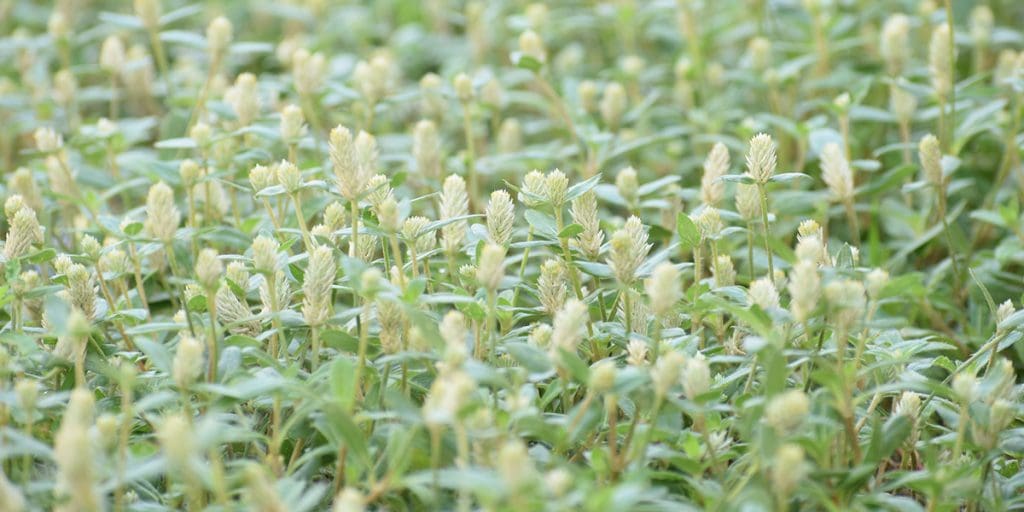In “The Ultimate Guide to Removing Alligator Weed from Waterways,” you’ll discover everything you need to know to tackle this persistent invasive species. This comprehensive guide walks you through recognizing, managing, and eradicating alligator weed, ensuring your waterways remain healthy and clear. You’ll explore effective, environmentally friendly methods and gain insights on how to prevent future infestations, all while keeping the wellbeing of your local ecosystem in mind. Whether you’re a homeowner, a conservationist, or just someone who cares about nature, this guide will equip you with the knowledge and tools necessary to restore your waterway to its natural beauty. Have you ever found yourself battling a persistent, green menace in your backyard pond or local waterway? If so, you’re not alone. The Ultimate Guide to Removing Alligator Weed from Waterways aims to provide you with the knowledge and tools you need to reclaim your water spaces from this invasive species.

What is Alligator Weed?
Identifying Alligator Weed
Alligator weed (Alternanthera philoxeroides) is an aggressive, invasive aquatic plant native to South America. It typically floats on the surface of waterways and can also grow on land. Recognizing this weed is the first step in eliminating it. Alligator weed features green, elliptic leaves that grow in opposite pairs along a hollow stem. Tiny white flowers usually appear in clusters from spring to fall.
Why is Alligator Weed a Problem?
Alligator weed poses several threats to your local ecosystem. For starters, it can completely blanket the surface of a waterway, blocking sunlight from reaching submerged plants and disrupting photosynthesis. Additionally, this plant can impede water flow, affecting irrigation, navigation, recreation, and even causing flooding. Furthermore, it displaces native plant species and diminishes biodiversity, which can be detrimental to the overall health of the ecosystem.
Understanding the Life Cycle of Alligator Weed
From Seed to Spread
Knowing how alligator weed propagates can help you devise a more effective removal strategy. This plant primarily spreads through vegetative reproduction. Even a small segment of the stem can grow into a new plant, making mechanical removal tricky. Spread can also occur via water currents, human activity, or movement of contaminated soil.
| Stage | Characteristics |
|---|---|
| Vegetative Growth | Branching stems and root formation from nodes |
| Flowering | Tiny white flowers in dense clusters |
| Seed Production | Rare but can occur under specific conditions |
| Regeneration | Growth from stem segments or disturbance |
Methods for Removing Alligator Weed
Mechanical Removal
Mechanical methods involve physically removing the weed from the water. This approach includes mowing, cutting, or pulling the weed out by hand.
Pros
- Immediate removal
- No chemicals involved
- Can be targeted to specific infested areas
Cons
- Labor-intensive
- Risk of spreading through fragmented pieces
- Requires regular maintenance to be effective
Biological Control
Biological control uses natural predators or pathogens to manage weed infestations.
Options
- Flea Beetles (Agasicles hygrophila): Known to munch on alligator weed.
- Moth larvae (Arcola malloi): Another natural predator.
Pros
- Sustainable long-term control
- Reduces reliance on chemical methods
Cons
- Limited to areas where these biological agents are approved
- Takes time to achieve noticeable results
- Potential for unforeseen ecological impacts
Chemical Control
Herbicides can be effective but require careful application to avoid affecting non-target plant and animal species.
| Herbicide Type | Active Ingredient | Application Time |
|---|---|---|
| Pre-emergent | Atrazine | Early spring before growth starts |
| Post-emergent | Glyphosate | Actively growing weed |
Pros
- Highly effective
- Can cover large areas quickly
Cons
- Environmental concerns
- Potential to harm non-target species
- Requires proper licensure and handling
Combined Approaches
Often a combination of these methods proves most effective. For example, initially using herbicides to reduce biomass, followed by introducing biological controls, and finally, regular mechanical removal for maintenance.
Pre and Post-Removal Considerations
Preparation Tips
Before you start removing alligator weed, consider the following:
- Survey the Area: Identify the extent of the infestation.
- Plan Appropriate Methods: Choose whether you’ll use mechanical, biological, chemical, or a combination of methods.
- Gather Necessary Tools: Make sure you have everything you need, from protective gear to herbicides.
Post-Removal Monitoring
After removal, it’s essential to monitor the area regularly. Keep an eye out for any regrowth, especially in the initial weeks and months. Continuous monitoring helps ensure that any remaining fragments don’t re-establish the weed.
Preventing Future Infestations
Environmental Management
- Water Level Control: Maintain optimal water levels as extreme fluctuations can favor alligator weed growth.
- Nutrient Management: Limit nutrient runoff into water bodies, as nutrient-rich water encourages weed growth.
Legislative Measures
Some regions have laws in place to manage and prevent the spread of alligator weed. Adhere to these regulations and participate in any local initiatives aimed at controlling invasive species.
Community Involvement
Public Awareness
Raising awareness within the community can significantly aid in controlling alligator weed infestations. Hosting workshops, distributing informational flyers, or using social media can help spread the word.
Volunteer Programs
Organizing community clean-up days can be an effective way to tackle large infestations. Involving local schools, NGOs, and recreational groups can provide the manpower needed for more extensive removal efforts.

Conclusion
Alligator weed is a tough adversary, but with the right approach, you can reclaim your waterways. Remember, early identification and a multi-faceted management plan are crucial in effectively controlling and eventually eradicating this invasive species. By implementing mechanical, biological, and chemical methods in a planned and monitored manner, your waterways can thrive once again. Don’t forget that community involvement and raising awareness can amplify your efforts, ensuring long-term success.
So, are you ready to take on the challenge and restore your waterway to its natural beauty? Your journey to a cleaner, healthier ecosystem starts now!
